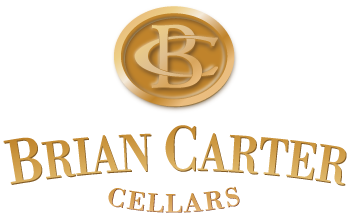
23 Apr Real Men Drink Pink!

Spring has sprung in Western Washington. And what a perfect time to drink pink as Brian Carter Cellars celebrates the release of the first wine from the 2020 vintage, our Abracadabra Rosé. This delicious Sangiovese-based blend is the perfect complement to sunshine, friends, and spring cuisine from salads to salmon.
Gone are the days of Grandma’s sweet rosé, welcome a new era of European dry-style rosé.Ours is a high acid, almost bone-dry version with mouth-filling flavors and a stunning electric pink color guaranteed to rock every day into bliss. As I often say, “Open a bottle of Abracadabra Rosé and, I guarantee that the sun will come out…Well, eventually it will!”
Just a few notes on how rosé wine is made. There are three basic techniques:
- Pick and press reds with or without skin contact.
- Saignée of crushed red grapes.
- Adding red wine to otherwise pale pink or white wine.
The first technique, is the most traditional and the most common which allows you to pick the grapes at ideal ripeness for rosé.
After picking, the grapes are either crushed or go directly to press. If you want to extract the most color from otherwise low color grapes, the crushed grapes can be allowed to sit in contact with the juice for up to 24 hours before pressing. This is the primary technique used at Brian Carter Cellars although we have so much color in the Sangiovese we use, we put the grapes into the press whole cluster with no crushing and no skin contact. This gives us a lower astringency and a less aggressive finish to the wine.
The second technique, called saignée (French for bleed) is also used at Brian Carter Cellars, although it only accounts for about 25% of the final wine. This is where we take larger berried varieties harvested for a red wine such as Sangiovese, Grenache, and Mourvèdre, and after crushing we ‘bleed’ a percentage of the juice off the skins to give a higher ratio of skins to juice. The saignée process gives us red wines left in the tank with a darker color and more extract and at the same time gives us some rosé material that has extra body when added to the ‘pick and press’ derived juice. To further enhance the final wine, we generally ferment the saignée in neutral barrels on the lees where we get added mouthfeel to the final blend.
The third technique for making rosé where a small percentage of red wine is added to white wine is the most common method used in Champagne in the production of sparkling rosé. While this technique is sometimes used in this country, it is not as common for making high-quality rosé.
A final comment on two common rosé wine myths:
1) Rosé should only be consumed in the spring and summer
2) Rosé should always be drunk within a year of their release.
At least for me and many of my friends, drinking rosé is something we do all year long. It is just too good not to. Also, depending on the wine and the food being paired with it, the wine can evolve into something more complex and more serious with time, which is why I stow away a bottle or two to drink a year or more after release.
Drink Pink My Friends!
Brian Carter, Winemaker


